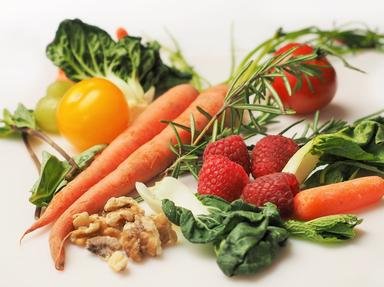Quiz Answer Key and Fun Facts
1. The Kiwano sits quietly in the fruit boxes of Somerfield, waiting for you with the patience of the proverbial saint. It wants you to walk past, wants you to look at it and be mesmerised by its exciting visuals. The sticker glistens as you wander by, innocently eyeing up the dates and pondering whether Medjool or dried are the best option. You see it. The distinctive colour, the unusual shape... please, describe this magnificent yet quintessentially evil fruit to me?
2. It may look like it came from a different planet, and yes, it does want to invade your house and take over your garden given half a chance, but the Kiwano is no alien species.
In fact, this shifty little fruit comes from much closer to home than you may care to think. Although it is now grown in most temperate countries around the world, the devious and astoundingly sadistic Kiwano originally came from this area...
3. With its interesting exterior and often heavy price tag, the deceitful Kiwano lures you to its insides, offering flavour and zest far beyond what this fruit can offer. A freakish outside belies a disappointing secret, for the Kiwano tastes much like another, much blander fruit. Little wonder, as it is part of this family...
4. But of course, the Kiwano is a master of disguise. It wasn't always the stunning Kiwano, you know. Kiwano is simply its business name, due to its similarities in colour to the now infamous Kiwi fruit (another evil member of the fruity family). Which of these is not one of the Kiwano's aliases?
5. Oh no! It appears you were foolish enough to let the Kiwano go to seed in your back garden! This invasive vine will be hard to kill off - we'll have to bring in the big guns. Say goodbye to your kitchen as the monoecious vine slowly engulfs your blender and starts to take a fancy to your dining suite.
How to stop this cretinous climber? You rustle through your book of garden pests, trying your damnedest to find a suitable disease to inflict on the plant. Which of the following has the dastardly Kiwano no known resistance to?
6. There goes the Chesterfield. You never really liked it anyway, fortunately. It goes well with the green of the leaves that are slowly destroying your home. Anyway.
Looking at the vines as they engulf the rest of your furniture suite, you remember that you have read about this plant before. The Kiwano, when introduced to an unusual habitat, began to take hold (much like the bullfrogs in that area). On which large, antipodean island is the Kiwano now classed as a weed?
Hint: The key word is antipodean!
7. It's starting to fruit. As you cower behind the settee, put your head between your legs, and wish a safe journey to your backside, the heavy fruit begin to fall. Realising that you might starve to death while the police are on their way, you grab a fruit and crack in on the side wall.
You look at it. It looks awful. You smell it. It smells awful. You take a bite and hope for the best, and as you recoil in disgust, you realise that in the wild, the fruit are poisonous. So poisonous, in fact, that...
8. And here comes your third massive blunder (after of course buying the thing in the first place and then being stupid enough to throw it out when it looked at you funny). You turn the heating up in an attempt to kill the vicious vines. Little do you know that the origin of the fruit means that, at certain temperatures, the vines and yes, the fruits last longer and in fact become more vibrant. Turning the thermostat to 24 degrees Celsius, you realise that you have raised the shelf life of the fruit from a few weeks in a cool environment to over... what?
9. Quick, flee! For the Kiwano has more chromosomes than you do! It is slightly frightening to believe that this primitive, yet aesthetically impressive fruit has a more bountiful clutch of genetics than you, the poor human that is attempting to battle off the vine invader. Knowing that the Kiwano has one more pair of chromosomes than you do, how many would you suggest the Kiwano has?
Hint: One more pair than humans - if you know how many humans have, you should know this!
10. You stand outside your house, watching as the plant finally takes over the chimney. You were lucky - your Kiwano was one of the common cultivars, probably hailing from Israel or New Zealand. You shudder to think at the carnage that could occur if everyone was foolhardy enough to buy this fruit.
But the Kiwano has a trick up its proverbial sleeve. Although the Kiwano is unique and has little variability within the species, certain phenological variability has been discovered and used to make accessions of the fruits. The introduction of a Botswanan species of the fruit has led to a highly successful accession line, which has improved the fruit to the point where people may be tempted to buy the thing. Which of the following attractive characteristics did the accession line from Botswana not exhibit?
Source: Author
Flynn_17
This quiz was reviewed by FunTrivia editor
Bruyere before going online.
Any errors found in FunTrivia content are routinely corrected through our feedback system.
